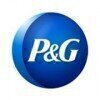Filter interviews by
Shyam Steel Manufacturing Safety Officer Interview Questions and Answers
Shyam Steel Manufacturing Safety Officer Interview Experiences
2 interviews found
I appeared for an interview in May 2025, where I was asked the following questions.
- Q1. About responsibilities
- Q2. About HIRA & JSA
I applied via Referral and was interviewed before Oct 2023. There were 2 interview rounds.
Question from fire, audit, process, Incident investigation & documentation.
(4 Questions)
- Q1. How to calculate Lost time of injuries rates?
- Ans.
Lost time of injuries rates can be calculated by dividing the total number of lost workdays by the total number of hours worked, then multiplying by 200,000.
Calculate the total number of lost workdays due to injuries.
Calculate the total number of hours worked by employees.
Divide the total number of lost workdays by the total number of hours worked.
Multiply the result by 200,000 to get the Lost time of injuries rate.
- Q2. How to calculate lifting tackles capacity?
- Ans.
Lifting tackles capacity can be calculated by determining the safe working load (SWL) and applying the appropriate safety factor.
Identify the type of lifting tackle being used (e.g. wire rope sling, chain sling, webbing sling).
Refer to the manufacturer's specifications or charts to determine the safe working load (SWL) for the specific lifting tackle.
Apply the appropriate safety factor to the SWL to calculate the lifti...
- Q3. Factory act section?
- Ans.
Factory Act is a legislation that regulates the working conditions in factories to ensure safety and welfare of workers.
The Factory Act aims to regulate the working conditions in factories such as working hours, health, safety, welfare, etc.
It sets guidelines for the employment of women and children, provisions for health and safety measures, and penalties for non-compliance.
For example, the Factory Act of 1948 in Indi...
- Q4. Full form of few terms.
- Ans.
Full form of few terms related to safety officer role.
PPE - Personal Protective Equipment (e.g. helmets, gloves, goggles)
HSE - Health, Safety, and Environment
JSA - Job Safety Analysis
MSDS - Material Safety Data Sheet
OSHA - Occupational Safety and Health Administration
Interview Preparation Tips
- Factory Act
- Factory Operations
- Process
- Communication
Top trending discussions






Interview questions from similar companies

I applied via Campus Placement and was interviewed in Aug 2024. There were 3 interview rounds.
Reasoning and numerical
(2 Questions)
- Q1. Tell me about your self
- Ans.
Experienced safety officer with a background in industrial safety protocols and risk management.
Over 5 years of experience in implementing safety procedures in industrial settings
Proficient in conducting safety audits and inspections
Skilled in developing and delivering safety training programs for employees
Strong knowledge of OSHA regulations and compliance standards
- Q2. What is your strength
- Ans.
My strength lies in my attention to detail and ability to identify potential safety hazards before they become a problem.
Strong attention to detail
Proactive in identifying safety hazards
Effective communication skills to address safety concerns
Ability to implement safety protocols and procedures
Experience in conducting safety inspections and audits
(2 Questions)
- Q1. What do you mean by Fire?
- Ans.
Fire is a rapid chemical reaction that releases heat, light, and various gases.
Fire is a result of the combustion process, where a fuel source combines with oxygen in the presence of heat to produce flames.
It requires three elements to sustain: fuel, oxygen, and heat.
Examples of fuel sources include wood, paper, gasoline, and natural gas.
Fire can be classified based on its fuel source, such as Class A (ordinary combust...
- Q2. What do you mean by safety
- Ans.
Safety refers to the measures taken to prevent accidents, injuries, and hazards in the workplace or any environment.
Safety involves identifying and assessing risks to prevent harm to individuals or property
It includes implementing safety protocols, procedures, and training to mitigate risks
Regular inspections and audits are conducted to ensure compliance with safety standards
Emergency preparedness and response plans ar...

I appeared for an interview in Feb 2025, where I was asked the following questions.
- Q1. Construction safety branding unit
- Q2. Hight work hard work examination work
- Q3. Confined space general safety rule

I applied via Approached by Company
(4 Questions)
- Q1. Ehs longform please let me
- Q2. What is fire please tell me
- Ans.
Fire is a rapid chemical reaction that releases heat, light, and various gases.
Fire is a result of the combustion process, where a fuel source combines with oxygen in the presence of heat to produce flames.
It requires three elements to sustain: fuel, oxygen, and heat.
Examples of fuel sources include wood, paper, gasoline, and natural gas.
Fire can spread rapidly and pose a significant risk to life and property if not co...
- Q3. How many types of fire extinguisher
- Ans.
There are five main types of fire extinguishers: water, foam, dry powder, CO2, and wet chemical.
Water fire extinguishers are suitable for Class A fires involving solid materials like wood or paper.
Foam fire extinguishers are effective for Class A and B fires involving flammable liquids like petrol or oil.
Dry powder fire extinguishers are suitable for Class A, B, and C fires involving flammable gases like propane.
CO2 fi...
- Q4. 4 types types
- Ans.
The 4 types of safety hazards are physical, chemical, biological, and ergonomic.
Physical hazards include slips, trips, falls, and machinery accidents.
Chemical hazards involve exposure to harmful substances like gases, liquids, or solids.
Biological hazards come from exposure to viruses, bacteria, fungi, and other living organisms.
Ergonomic hazards result from poor workstation design, repetitive tasks, or improper liftin...
Very nice I wood like

I appeared for an interview before Apr 2024, where I was asked the following questions.
- Q1. What is TBSC ?
- Q2. Oxygen level required confined space
- Ans.
Confined spaces require oxygen levels between 19.5% and 23.5% for safe entry and work.
Oxygen levels below 19.5% can lead to asphyxiation.
Oxygen levels above 23.5% increase fire and explosion risks.
Regular monitoring of oxygen levels is essential in confined spaces.
Examples of confined spaces include tanks, silos, and tunnels.
- Q3. Procedure to make Risk assessment
- Ans.
Risk assessment involves identifying hazards, evaluating risks, and implementing control measures to ensure safety.
Identify hazards: Recognize potential sources of harm, such as machinery, chemicals, or work practices.
Evaluate risks: Assess the likelihood and severity of harm from identified hazards, using a risk matrix.
Implement control measures: Develop strategies to eliminate or reduce risks, such as safety training...
- Q4. ISO full form
- Ans.
ISO stands for International Organization for Standardization, which develops and publishes international standards.
Founded in 1947, ISO is an independent, non-governmental international organization.
ISO standards cover various fields, including quality management (ISO 9001) and environmental management (ISO 14001).
ISO ensures consistency and quality across products and services globally.
ISO standards are developed thr...
- Q5. Classified the fire
- Ans.
Fires are classified into different classes based on their fuel sources and characteristics.
Class A: Ordinary combustibles (wood, paper, cloth). Example: burning paper.
Class B: Flammable liquids and gases (gasoline, oil). Example: a spilled gasoline fire.
Class C: Electrical fires (live electrical equipment). Example: a fire caused by faulty wiring.
Class D: Combustible metals (magnesium, titanium). Example: a fire invol...
- Q6. Classified the hazard
- Ans.
Hazards can be classified into categories like physical, chemical, biological, ergonomic, and psychosocial.
Physical hazards: Examples include slips, trips, and falls.
Chemical hazards: Exposure to toxic substances like asbestos or pesticides.
Biological hazards: Risks from bacteria, viruses, or mold.
Ergonomic hazards: Poor workstation design leading to repetitive strain injuries.
Psychosocial hazards: Stress from workplac...
- Q7. Classified the fire extinguishers
- Ans.
Fire extinguishers are classified based on the type of fire they are designed to combat, ensuring effective fire suppression.
Class A: For ordinary combustibles like wood and paper (e.g., water extinguishers).
Class B: For flammable liquids such as gasoline and oil (e.g., foam extinguishers).
Class C: For electrical fires (e.g., CO2 extinguishers).
Class D: For combustible metals like magnesium (e.g., dry powder extinguish...
- Q8. The function of the over hoist limit switch
- Ans.
The over hoist limit switch prevents a hoist from lifting loads beyond a safe height, ensuring operational safety.
Acts as a safety mechanism to stop the hoist when the load reaches a predetermined height.
Prevents potential accidents or equipment damage by avoiding overextension.
Commonly used in cranes and elevators to ensure safe operation.
Example: In a construction crane, if the load reaches the maximum height, the sw...
- Q9. Types of permit
- Ans.
Permits ensure safety in hazardous work environments, regulating activities like hot work and confined space entry.
Hot Work Permit: Required for activities like welding or cutting that can ignite flammable materials.
Confined Space Permit: Needed for work in areas with limited entry and exit, ensuring safety measures are in place.
Electrical Work Permit: Ensures safety protocols are followed when working on or near elect...
- Q10. Responsibility of safety officer
- Ans.
A Safety Officer ensures workplace safety by implementing policies, conducting training, and monitoring compliance with regulations.
Conduct regular safety inspections to identify hazards, e.g., checking for proper use of personal protective equipment (PPE).
Develop and implement safety training programs for employees, such as fire safety drills and emergency response training.
Investigate accidents and incidents to deter...
Interview Preparation Tips

I applied via Job Portal and was interviewed in Nov 2022. There were 2 interview rounds.

(2 Questions)
- Q1. Safety department. JSA. HIRA
- Q2. TBT. JSA. HIRA ADIT INTERNAL WEEKLY'S REPORT. MONTHLY.
Interview Preparation Tips

I applied via Referral and was interviewed before Oct 2022. There were 3 interview rounds.

(2 Questions)
- Q1. Previous experience
- Q2. Education background
(1 Question)
- Q1. Knowledge about safety

I applied via Referral and was interviewed in Oct 2022. There were 3 interview rounds.

A test designed to ability in a particular skill or field of knowledge.
(2 Questions)
- Q1. What is Scaffold, how many type of scaffold & scaffolding materials name?
- Ans.
Scaffold is a temporary structure used in construction work. There are various types of scaffold and materials used for it.
Scaffolds are used to provide a safe working platform for workers at height.
Types of scaffold include suspended, supported, mobile, and aerial lifts.
Materials used for scaffold include wood, steel, aluminum, and fiberglass.
Scaffolds must be inspected regularly to ensure they are safe for use.
- Q2. Define Work at Heigh
Interview Preparation Tips

(2 Questions)
- Q1. What is HIRA and PTW
- Q2. What is LSSR
- Ans.
LSSR stands for Life Safety System Requirements, focusing on safety protocols in various environments.
LSSR outlines essential safety measures for protecting lives in emergencies.
It includes fire safety protocols, emergency exits, and evacuation plans.
LSSR is crucial in industries like construction, healthcare, and manufacturing.
For example, LSSR mandates regular fire drills in workplaces to ensure preparedness.
Shyam Steel Manufacturing Interview FAQs
Tell us how to improve this page.
Shyam Steel Manufacturing Interviews By Designations
- Shyam Steel Manufacturing Safety Officer Interview Questions
- Shyam Steel Manufacturing Logistics Executive Interview Questions
- Shyam Steel Manufacturing Executive Assistant Interview Questions
- Shyam Steel Manufacturing Sales Officer Interview Questions
- Shyam Steel Manufacturing Assistant Manager Interview Questions
- Shyam Steel Manufacturing Assistant Manager II Interview Questions
- Shyam Steel Manufacturing Senior Sales Officer Interview Questions
- Shyam Steel Manufacturing Accounts Officer Interview Questions
- Show more
Interview Questions for Popular Designations
Overall Interview Experience Rating
based on 2 interview experiences
Difficulty level
Duration
Safety Officer Interview Questions from Similar Companies
Shyam Steel Manufacturing Safety Officer Reviews and Ratings
based on 1 review
Rating in categories
|
Area Sales Manager
31
salaries
| ₹5.1 L/yr - ₹14 L/yr |
|
Assistant Manager
20
salaries
| ₹4.7 L/yr - ₹8 L/yr |
|
Senior Sales Officer
19
salaries
| ₹3.2 L/yr - ₹6.6 L/yr |
|
Sales Officer
19
salaries
| ₹2.1 L/yr - ₹5.1 L/yr |
|
Senior Manager
15
salaries
| ₹6 L/yr - ₹23.1 L/yr |

OPPO

LG Electronics

Cummins

Berger Paints
- Home >
- Interviews >
- Shyam Steel Manufacturing Interview Questions













